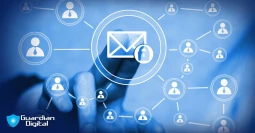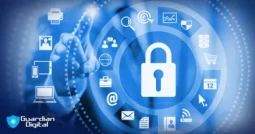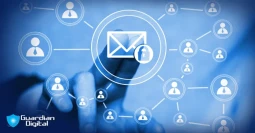Essential Settings to Secure Google Workspace from Phishing and Malware Attacks

Are you relying on yesterday’s email security for today’s advanced threats? Default cloud email settings may have been adequate in the past, but they aren’t built to tackle today’s cyber threats. Modern phishing and malware attacks demand proactive defenses that adapt as threats evolve. By adjusting a few Google Workspace Security Best Practices, you can add a layer of protection to keep your team safer from emerging threats. Using Google Workspace Security means staying more prepared, adapting to new challenges, and keeping one step ahead of changing email threats.
What is Google Workspace used for?
Google Workspace is used for cloud-based productivity, collaboration, and communication. It includes Apple apps like Gmail, Drive, Docs, and Meet, offering an integrated workspace for businesses, educational institutions, and organizations.
How Does Google Workspace Work?
Google Workspace is a cloud ecosystem that allows users to collaborate in real time, share data across applications, and manage organizational tools effectively. Admins manage settings through the Google Admin Console, where they can enable key features to secure their environment.
Strengthen Advanced Phishing and Malware Protections
The protection of cloud email security keeps improving with the different ways phishing attacks can be evasive. Proactivity will become essential in maintaining a good defense against these kinds of attacks. Enable Advanced Phishing and Malware Protection in Google Workspace to block high-risk emails, suspicious links, and malware-laden attachments from landing in your inbox. This is one of the core Google Workspace Phishing Protection settings every admin should configure.
How to Implement It:
In the Admin console, go to Menu > Apps > Google Workspace > Gmail > Safety. In the Safety section, scroll down to Attachments.
Why It Works: High-risk content is instantly scanned for advanced protection to help users safely avoid phishing and malware attacks. Link analysis allows malicious links to be detected and blocked as hackers devise new ways around simple filters. Blocking such threats at the gateway provides a strong foundation for cloud email security, protecting all user accounts from malicious attacks. These proactive measures enhance Google Workspace Email Security by filtering out high-risk emails and attachments.
Enhance Your Shield with Spam and Suspicious Link Protection

Locate and configure spam filters by going to Gmail, clicking the gear icon, and selecting "Manage this organization." From the menu on the left, select Apps > Google Workspace > Gmail > Spam, Phishing, and Malware. Set filters to block specific words, email addresses, or link types that match common phishing patterns. You can also review Gmail Phishing Email Examples and adjust your filters accordingly.
Benefits: Spam filtering ensures that your users remain on point and secure. It filters out potentially dangerous emails before they become a threat, strengthens the capability to filter out phishing emails, and reduces distractions caused by spam emails. Users who receive suspicious emails should use Gmail Phishing Reporting tools to flag and report them.
Lock Down Attachments to Avoid Malware Ingress

Locate and configure the attachment filters by going to Gmail, clicking the gear icon, and selecting "Manage this organization." From the menu on the left, select Apps > Google Workspace > Gmail > Safety. Once there, check the box next to Block risky downloads to scan attachments and block harmful files for additional security. Then, allow Detect harmful attachments to scan high-risk attachments like .exe, .pdf, and .zip before reaching your team.
Scanning attachments is a critical defense against malware attacks against users. It prevents files with malicious programs from reaching the intended recipients. It also helps secure your email with Phishing Protection Software and file-based threat prevention.
Add Two-Factor Authentication (2FA).
To protect sensitive information, you need much more than strong passwords. Two-factor authentication, or 2FA, protects accounts by creating an additional layer with which users verify their identities. Even if a hacker already has your password, this further complicates their ability to access your account.
Steps:
Navigate to the Admin Console by going to Gmail, clicking the gear icon, and selecting "Manage this organization." From the menu on the left, select Security, then 2-step verification.
Admin Console > Security > Authentication > 2-Step Verification
Tip: For high-risk accounts, consider adding security keys, such as USB or NFC devices, to provide a more robust layer of protection and added convenience. Knowing where is Google Admin Console is essential for managing these settings effectively.
Keep Your Data Secure With Data Loss Prevention Policies (DLP)
Workspace DLP policies prevent sensitive information from leaving your organization by detecting and blocking high-risk data transfers. They form essential email security applications, particularly in regulated industries such as healthcare and finance, where DLP policies are at the forefront.
You must have one of these supported versions to enable this feature: Frontline Standard, Enterprise Standard, Enterprise Plus, Education Fundamentals, Education Standard, Teaching and Learning Upgrade, Education Plus, or Enterprise Essentials Plus.
Locate and configure DLP policies by going to Gmail, clicking the gear icon, and selecting "Manage this organization." From the menu on the left, select Admin Console > Apps > Google Workspace > Gmail > Compliance > Data Loss Prevention. Then, go to Gmail's Compliance > Data Loss Prevention area, create rules with sensitive words or terms (like confidential or financial) flagged, and limit external data sharing.
Benefits: DLP prevents sensitive information from being shared accidentally or maliciously. Therefore, it grants cloud email services an extra security layer. Additionally, with DLP policies applied in the information flow process of your organization, you have complete control over how that information will move around.
Security Audits and Alerts - Monitoring and Customizing

Steps:
Locate and configure security monitoring by going to Gmail, clicking the gear icon, and selecting "Manage this organization." From the menu on the left, select Admin Console > Security > Alert Center to monitor unauthorized login attempts and device connections. Run regular security audits to keep all configurations up-to-date and resilient against emerging threats.
Why it matters: Monitoring means you proactively address the threats while staying sharp in defending against them.
How to Deliver Effective Phishing Awareness Training
Regular Phishing Prevention Training will help users identify the red flags of phishing much more successfully. Use tools like Google's Phishing Quiz to simulate phishing emails for better real-world reinforcement, or find your email risk with the Guardian Digital Email Assessment Tool.

Configuring these options gives your team a stronger, more resilient Google Workspace email security foundation that keeps pace with evolving threats.
Phishing Is Evolving
Other FAQs
- What Is Guardian Digital EnGarde Cloud Email Security?
- FAQs: What Are Some Examples of Malicious Code?
- How to Properly Scan Your Windows Computer for Malware & Remove Malware from Your PC
- FAQs: What Are Denial of Service (DoS) Attacks?
- FAQs: Why Outsource Businesses Email Security?
- What Is Domain Spoofing?
- What Are Insider Threats & How Can You Reduce Your Risk?
- The Silent Assassins: How Impersonation Attacks Target CEOs via Email
- How Can I Choose the Right Email Security Service for My Organization?
- What Are the Benefits of Managed Security Services Providers (MSSPs)?



